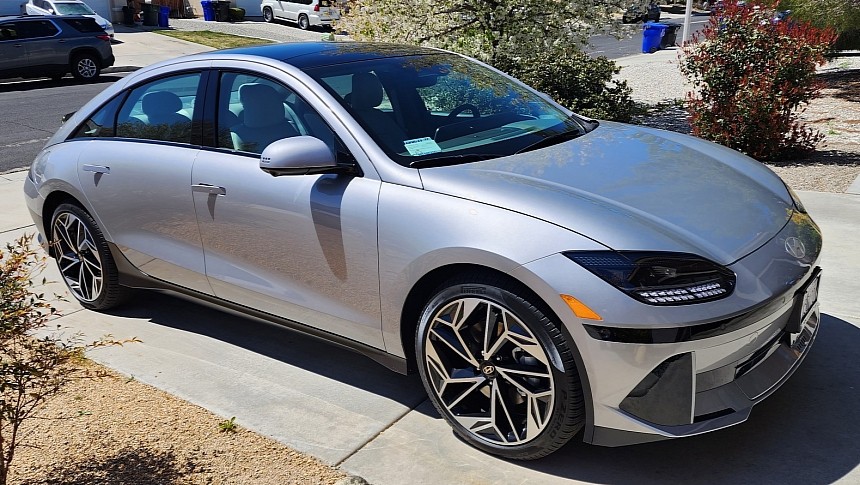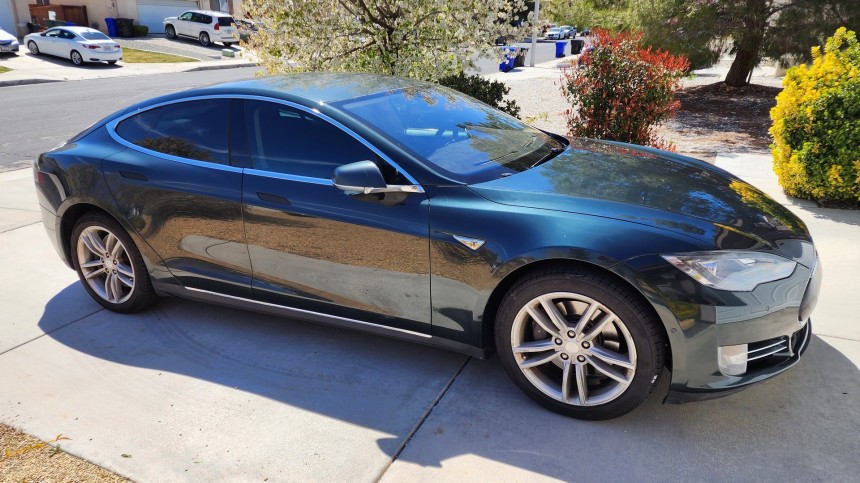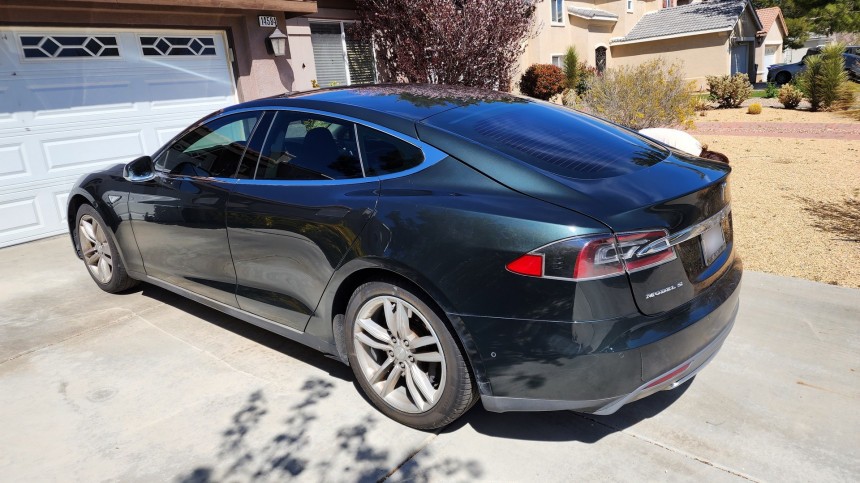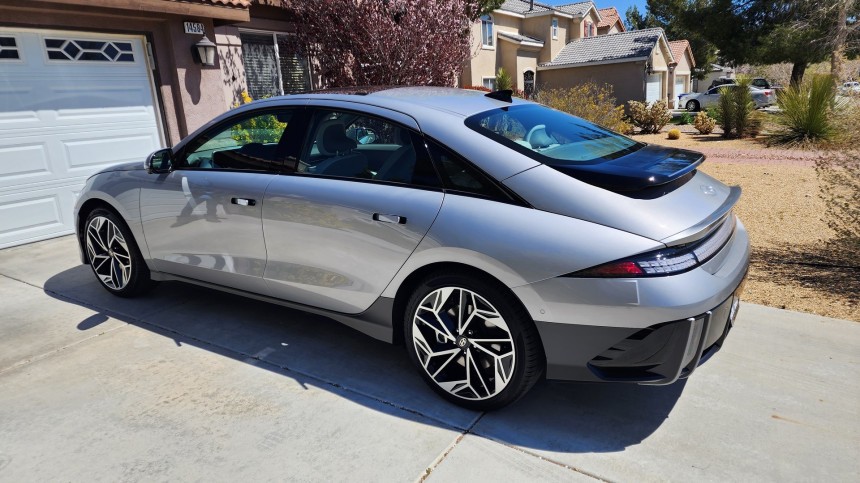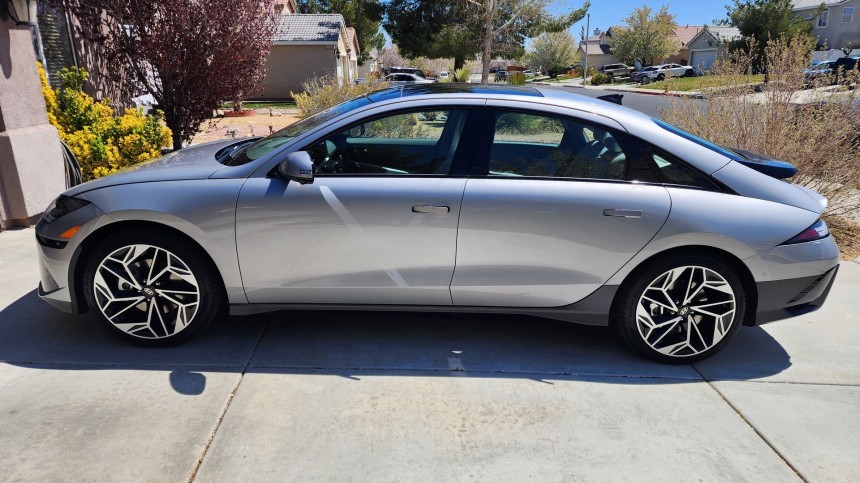When I started covering electric cars in general and Tesla in particular, people loved the brand. They still praised the premium experience in Tesla Service Centers, the extra mile the staff would go to satisfy customers, and how the brand's battery electric vehicles (BEVs) were the only ones with feasible ranges – theoretically. I wrote about some signs that this was a house of cards and discovered even older stories that something was not right. David Rasmussen's tale is the latest example of a demise Tesla has not cared to avoid.
If you don't remember him, Rasmussen was the lead plaintiff in the voltage cap class action against the BEV maker. After a few fires erupted with early Tesla vehicles, the company pushed the over-the-air (OTA) updates 2019.16.1 or 2019.16.2. They limited the voltage each cell could reach when a BEV affected by them recharged. That made charging speed and range drop for all these cars. For Rasmussen, that was unacceptable – 1,742 other owners joined him in that dissatisfaction.
Two years later, Tesla decided to do a mea culpa and proposed a settlement that gave each of these customers $625. Rasmussen later told me about the BMS_u029 error code that started killing the battery packs of several of the customers who accepted Tesla's deal – it didn't even have an official name at that point. Some of these owners joined the Facebook group for affected owners, which now has more than 800 members. Rasmussen avoided joining them by selling his 2014 Model S before the error code showed up.
The former Tesla customer drives his car 250 miles every single day. He needed a BEV that charged fast and offered a range that was higher than his daily needs. Rasmussen's first intention was to keep the old one running, so he checked his options.
"I, too, was fearing the imminent battery failure and had investigated what options would be available out of warranty. I talked to Gruber Motors in Arizona, and they had 80 cars awaiting repairs on his lot (a six-month backlog). I also talked to Jason (Hughes) at 057 Tech and just didn't want to go that route. In the end, it was the slowed supercharging that was the deciding factor to sell the car. My round-trip commute required two supercharging sessions per day, with each being about 50 minutes."
Until very recently, he had his eyes on a Lucid Air, but he could not wait:
"Since I wanted the base RWD model, it was going to be late this year before it became available. I also am a bit afraid for the health of Lucid. I do love their technology and drove a Touring edition in February."
Willing to keep driving electric, he soon found another option:
"When the IONIQ 6 finally arrived, I was one of the first to drive one. I really fell for the looks, features, comfort, and especially the range and charge speed. The two years of free Electrify America (EA) charging was also a great incentive. It took me a few weeks to find a dealership that would sell it at MSRP (without add-ons or markups) in the color and trim I wanted (Curated Silver Limited trim)."
Rasmussen purchased the IONIQ 6 on March 31.
"Now, I can make my commute on a 90% charge. But I get back to the charger with 5% left. Also, the charging at about 80% does slow (though not nearly as much as a Tesla). It takes another 8-9 minutes to go from 80% to 90%. So, I do fast-charge twice per day for 10-20 minutes each time (30 minutes per day). This saves me over an hour each day over my Model S."
The former Tesla owner does not miss the overestimated ranges Reuters said Elon Musk ruled his company's BEVs should present.
"The E-GMP architecture also is quite impressive. The range in real-world conditions is pretty accurate. I can really get 280 miles vs. 305 miles of EPA rating. The dash displayed range tracks real conditions and recent driving style (unlike Teslas). One unexpected finding was that they also only charge to 4.15V max cell voltage at 100%. This is equivalent to about 92% on a Tesla battery. This allows it to safely charge at a higher rate above 80% and will provide much less stress on the pack as a whole."
Surprisingly, he is also satisfied with EA.
"I also choose my stations carefully. There are several options along my route. So, if a station is full, I can use another further along the route. I have only waited a few minutes to get a charge. I avoid stations with poor performance and use Plugshare to check them out. I have also become vocal on the Facebook Electrify America Experiences group. So much so that I have been accused of being a paid shill for EA. I do know that their station conditions vary widely by location. But I also know there are good, well-maintained stations. The network as a whole seems to still be growing, and with Siemens's investment last year, it should be viable much longer than just exhausting the $2 billion VW settlement agreement that set it up."
Rasmussen's wife also decided to drive electric. She evaluated several BEVs to replace her Jeep Grand Cherokee: "Nissan Ariya, Toyota bZ4X, Subaru Solterra, VW ID.4, Ford Mustang Mach-E, Kia EV6, and Hyundai IONIQ 5."
"In the end, she settled on the Audi Q4 e-tron for it looks, comfort, features, and cost. She is very happy with her car. We wanted to drive the (Cadillac) Lyriq, but all were pre-ordered, and left the dealership before we could even see one. Eventually, we did see one and wouldn't have chosen it. We also later drove a VinFast VF8, which seemed nice. We also will be driving a Fisker Ocean when we can."
Pay careful attention to the list. There is no product from Tesla, even though the Model Y fits the requirements. Rasmussen could have chosen a new Model S. Yet, he and his wife didn't even consider the brand. Several people who faced issues with Tesla vehicles told me they would never buy another one: in part for the issues they faced, in part to prevent stepping on a Tesla Service Center ever again. I asked Rasmussen about it, but I probably shouldn't have: his settlement with Tesla probably prevents him from talking about it. Honestly, what he didn't say told me everything I needed to know about his experience with Tesla, a company he once loved and supported. Not anymore. And he is no exception to the rule the BEV maker is creating: it is so consistent you have to believe it is on purpose.
Two years later, Tesla decided to do a mea culpa and proposed a settlement that gave each of these customers $625. Rasmussen later told me about the BMS_u029 error code that started killing the battery packs of several of the customers who accepted Tesla's deal – it didn't even have an official name at that point. Some of these owners joined the Facebook group for affected owners, which now has more than 800 members. Rasmussen avoided joining them by selling his 2014 Model S before the error code showed up.
"I, too, was fearing the imminent battery failure and had investigated what options would be available out of warranty. I talked to Gruber Motors in Arizona, and they had 80 cars awaiting repairs on his lot (a six-month backlog). I also talked to Jason (Hughes) at 057 Tech and just didn't want to go that route. In the end, it was the slowed supercharging that was the deciding factor to sell the car. My round-trip commute required two supercharging sessions per day, with each being about 50 minutes."
Until very recently, he had his eyes on a Lucid Air, but he could not wait:
"Since I wanted the base RWD model, it was going to be late this year before it became available. I also am a bit afraid for the health of Lucid. I do love their technology and drove a Touring edition in February."
"When the IONIQ 6 finally arrived, I was one of the first to drive one. I really fell for the looks, features, comfort, and especially the range and charge speed. The two years of free Electrify America (EA) charging was also a great incentive. It took me a few weeks to find a dealership that would sell it at MSRP (without add-ons or markups) in the color and trim I wanted (Curated Silver Limited trim)."
Rasmussen purchased the IONIQ 6 on March 31.
"Now, I can make my commute on a 90% charge. But I get back to the charger with 5% left. Also, the charging at about 80% does slow (though not nearly as much as a Tesla). It takes another 8-9 minutes to go from 80% to 90%. So, I do fast-charge twice per day for 10-20 minutes each time (30 minutes per day). This saves me over an hour each day over my Model S."
"The E-GMP architecture also is quite impressive. The range in real-world conditions is pretty accurate. I can really get 280 miles vs. 305 miles of EPA rating. The dash displayed range tracks real conditions and recent driving style (unlike Teslas). One unexpected finding was that they also only charge to 4.15V max cell voltage at 100%. This is equivalent to about 92% on a Tesla battery. This allows it to safely charge at a higher rate above 80% and will provide much less stress on the pack as a whole."
Surprisingly, he is also satisfied with EA.
"I also choose my stations carefully. There are several options along my route. So, if a station is full, I can use another further along the route. I have only waited a few minutes to get a charge. I avoid stations with poor performance and use Plugshare to check them out. I have also become vocal on the Facebook Electrify America Experiences group. So much so that I have been accused of being a paid shill for EA. I do know that their station conditions vary widely by location. But I also know there are good, well-maintained stations. The network as a whole seems to still be growing, and with Siemens's investment last year, it should be viable much longer than just exhausting the $2 billion VW settlement agreement that set it up."
"In the end, she settled on the Audi Q4 e-tron for it looks, comfort, features, and cost. She is very happy with her car. We wanted to drive the (Cadillac) Lyriq, but all were pre-ordered, and left the dealership before we could even see one. Eventually, we did see one and wouldn't have chosen it. We also later drove a VinFast VF8, which seemed nice. We also will be driving a Fisker Ocean when we can."
Pay careful attention to the list. There is no product from Tesla, even though the Model Y fits the requirements. Rasmussen could have chosen a new Model S. Yet, he and his wife didn't even consider the brand. Several people who faced issues with Tesla vehicles told me they would never buy another one: in part for the issues they faced, in part to prevent stepping on a Tesla Service Center ever again. I asked Rasmussen about it, but I probably shouldn't have: his settlement with Tesla probably prevents him from talking about it. Honestly, what he didn't say told me everything I needed to know about his experience with Tesla, a company he once loved and supported. Not anymore. And he is no exception to the rule the BEV maker is creating: it is so consistent you have to believe it is on purpose.
